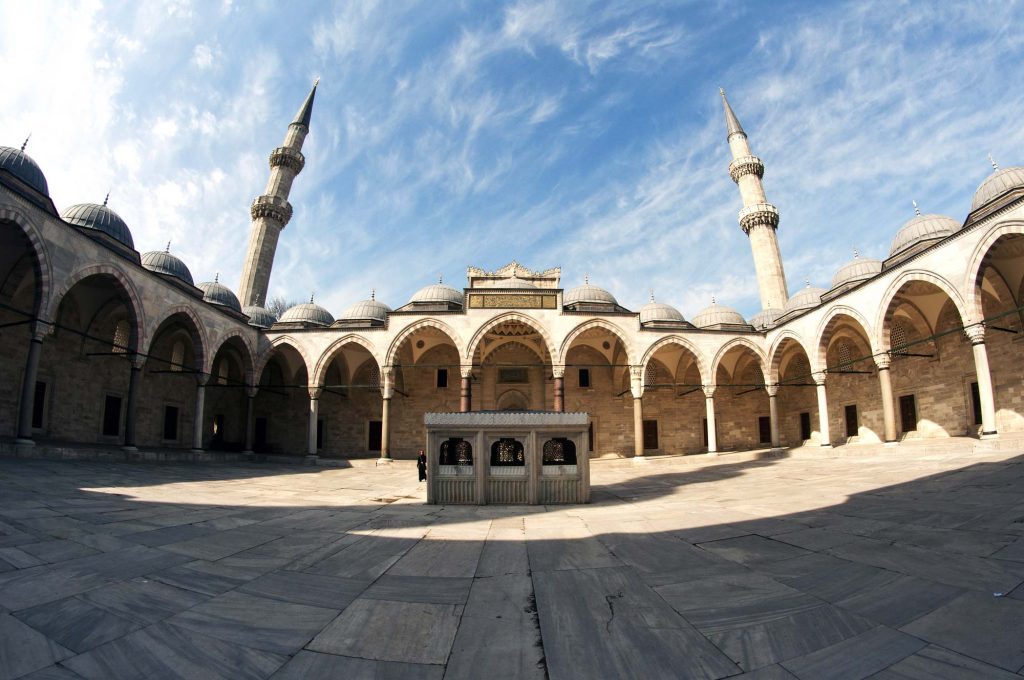Modernization of the architecture of Muslim societies inevitably comes at a price. Modernizing architecture is not only about importing and applying some well-established architectural styles from the West.
It is also about subscribing to and following – knowingly or otherwise – certain values and standards that are either in outright conflict or just irreconcilable with the values and standards Muslims already have.
To make things worse, everything Muslims do within each and every domain of their cultural and civilizational presence is inspired and guided by the worldview and value system of Islam, directly or indirectly, and sometimes more and at other times less.
That means that pursuing modernity – which is as much a philosophy and creed, as a mere historical period and an ensemble of modern-day technological innovation, governance and socioeconomics – is set to place the procedure, sooner or later, on a collision course with some of the most fundamental principles of Islam.
The biggest stumbling blocks to living peacefully with modernity – especially insofar as Muslims are concerned – are modernity’s doctrinal mantra that the predecessors in every regard were antiquated, passé and outstripped; its association with individualism and subjectivity; its worship-like attitude towards science and technology; its adoption of rationalism and empiricism as the ultimate sources of knowledge and virtue; its rejection of religion and any form of spirituality, and also ethics that could be derived from the former; its rejection of tradition and native culture; and its espousal of rapid, often frenzied, urbanization and material consumerism.
Modernization as a Poisoned Chalice
Even though modernity has many good points and has brought considerable material goodness to mankind, it at the same time contributed significantly to mankind’s most distressing misfortunes.
It caused the destruction of natural environment; it increased pollution; it led to high population density and inadequate infrastructures in most cities; it divested man of any transcendental meaning, value and purpose; it augmented inequality whereby the rich get richer and the poor get poorer.
It bred injustice, insecurity and ontological uncertainty; it destroyed the family institution; and it broke up the social ties that had held people together in traditional societies, making them no longer feel as connected to one another.
Thus, whenever and wherever Muslims embraced modernity, they faced grave problems as regards their heritage, tradition, culture, beliefs and values. The matter was proportionate. The more modernized a country was, the more alienated and even disconnected from its history, culture and religion it became.
To some, modernization meant separation from the people, identity and self. It was kind of a cultural suicide. Modernity in its totality and as conceived by the West was not only discordant with Islam – in its capacity as philosophy, worldview, value system, and complete way of life – but also it modelled as its rival.

An example are several Muslim countries, such as Egypt, Turkey, Tunisia, Algeria, Indonesia and many others, who in the 19th and the first half of the 20th century embarked on a series of sweeping and all-encompassing modernization programs.
The programs were completely after the Western model. In the end, modernization turned out to be the total secularization, westernization and desacralization of systems, history, culture, life, thought and spirit. However, since all Muslim societies were extremely rich in all of those departments – dominating for centuries the world’s cultural and civilizational scene – modernization in the Muslim world was more concerned about, and busier with, destroying than building.
It was more about confusing than enlightening, and more about problem-making than problem-solving. For instance, certain modernization drives were accompanied by intensive and well-thought-out campaigns against veil (face covering for Muslim women), hijab (head covering for Muslim women), Muslim traditional dresses, Islamic education, Islamic institutions, Islamic shari’ah law, Islamic personal, family and social values, Islamic ethics, the Arabic language and the Arabic alphabet.
In a nutshell, modernization for Muslims turned out to be a radical form of relativization, whereby all true goodness and virtues were rendered relative, and as such were bartered for spiritual, intellectual and functional discord, tension, rupture, incoherence and fragmentation. Modernization turned out to be not progressive, but regressive. It favoured short-term gains at the expense of long-term losses.
The best evidence for this assertion is today’s scientific, technological, cultural, intellectual, political and socioeconomic standing of those Muslim countries as had chosen more than a century ago to go modern (and westernized). Most of them are not to be found anywhere on the cultural and civilizational map of the world.
Some people, and even institutions, were largely aware of the hidden modernization threat, proceeding with caution. However, modernization had been constructed in such a way that one cannot simply break it down into fractional and autonomous aspects – in particular along its philosophy-actuality divide – taking then what is needed or wanted, and putting the rest away.
Modernization is to be dealt with in its entirety, regardless of how much, at the end of the day, is assimilated thereof, and how much is dismissed. Modernization is tantamount to fire; if one plays with it, one gets burned. Remaining utterly unscathed is an improbable prospect. Damage limitation, or control, is the only pragmatic solution left.
Read the full article here.
The post Restoring Confidence in Islamic Traditional Architecture appeared first on About Islam.
source https://aboutislam.net/family-life/culture/restoring-confidence-in-islamic-traditional-architecture/
No comments:
Post a Comment